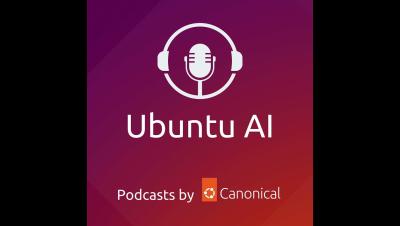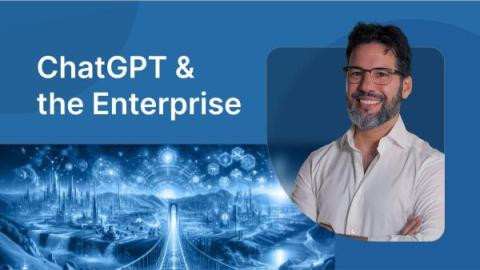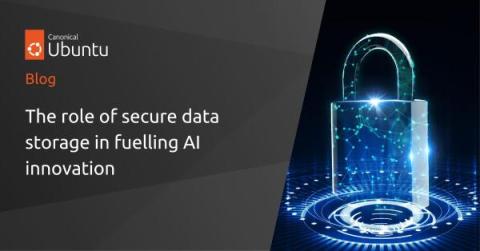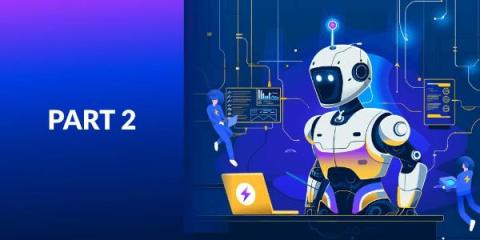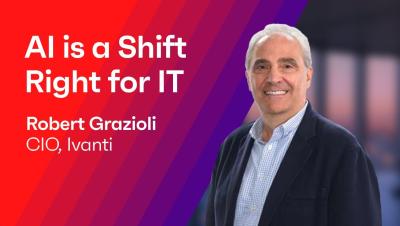Operations | Monitoring | ITSM | DevOps | Cloud
AI
Embedded World 2024: Hot Topics and Big Surprises
From edge AI to the Cyber Resilience Act, hear about the hottest topics on everyone's lips at Embedded World 2024. Memfault co-founders François Baldassari and Chris Coleman discuss their take on this year's big themes. Learn what surprised them most and what the implications are for the industry's future.
Ubuntu AI | S2E5 | All about Ops: DataOps, MLOps, DevOps, AIOps
The emergence of DevOps has changed the way enterprises handle software delivery processes, leading to faster and improved quality. After DevOps has been coined, other practices such as DataOps, MLOps, and AIOps have emerged. In the podcast, Michelle and Andreea, Data PM and AI Product Managers, respectively, will be discussing the significance of these Ops processes in streamlining and optimizing enterprise data, machine learning, and AI projects and use cases.
Innovate & Educate: The Rise of Artificial Intelligence Education
Learning can be frustrating when it feels like it's a one-size-fits-all approach. But what if that could change? AI can tailor lessons to your learning style. Virtual tutors are always patient and ready to explain tricky math problems again. Event tests that understand what you need to learn next are a reality. It isn't science fiction - it's the power of artificial intelligence in education. This approach is transforming how we learn. It holds exciting possibilities but also raises important questions.
ChatGPT & the Enterprise: Balancing Caution and Innovation in the Age of AI
OpenAI's groundbreaking AI tool ChatGPT was officially launched on November 30th, 2022. However, it wasn't until the early months of 2023 that its impact truly began to ripple through the global consciousness. This transition from a novel technological release to a sensation that captivated the world was both rapid and remarkable. The metrics speak volumes: According to Similarweb, ChatGPT garnered around 266 million visits in December 2022.
Embracing the AI Revolution: A Leader's Perspective on the Future of Business
"In a world where change is the only constant, the rapid advancement of Artificial Intelligence (AI) is a formidable force that is redefining life and commerce. As we witness firsthand the seismic shifts occurring in the business world due to the advent of AI, the landscape is changing rapidly, and with it, the rules of engagement for companies across the globe.
NLP vs. LLMs: Understanding the differences
As AI continues to grow and solve problems across countless industries, a key part of that tech is the ability to seamlessly bridge the gap between human language and machine understanding. This is where natural language processing (NLP) and large language models (LLMs) come in. They provide distinct and specialized approaches for connecting the power of human communication with software and machines. Or in simpler terms, NLP and LLMs enable us to have human-like conversations with software.
The role of secure data storage in fueling AI innovation
Artificial intelligence is the most exciting technology revolution of recent years. Nvidia, Intel, AMD and others continue to produce faster and faster GPU’s enabling larger models, and higher throughput in decision making processes. Outside of the immediate AI-hype, one area still remains somewhat overlooked: AI needs data (find out more here).
AI realism (part two)
Emotions are running high about AI technologies. In this 2-parter, I do my best to make a rational case for the state of AI, and how we can respond to it. This is the second part; catch up with part one here. Today, we’ll talk about developing a company culture that thrives on experimentation and unpredictability. I’ll describe the conditions that can keep a product company nimble and healthy during a period of rapid change, enabling it to take advantage of emerging technologies.
How AI is a Shift Right for IT, Robert Grazioli, CIO, Ivanti
Find out how AI can help IT reduce burnout and power better Everywhere Work in Ivanti’s latest report: ivanti.com/research. Without data, you are not going to have AI. But the key here is to have a data architecture that will enable AI, says Ivanti CIO Robert Grazioli. Citing Ivanti’s research report, Everywhere Work Report 2024, he covers why remote and hybrid work has increased the burden and responsibility on today’s IT teams, and why AI is seen by many as a solution to lessen IT stress and put the power back in the hands of the end user.




